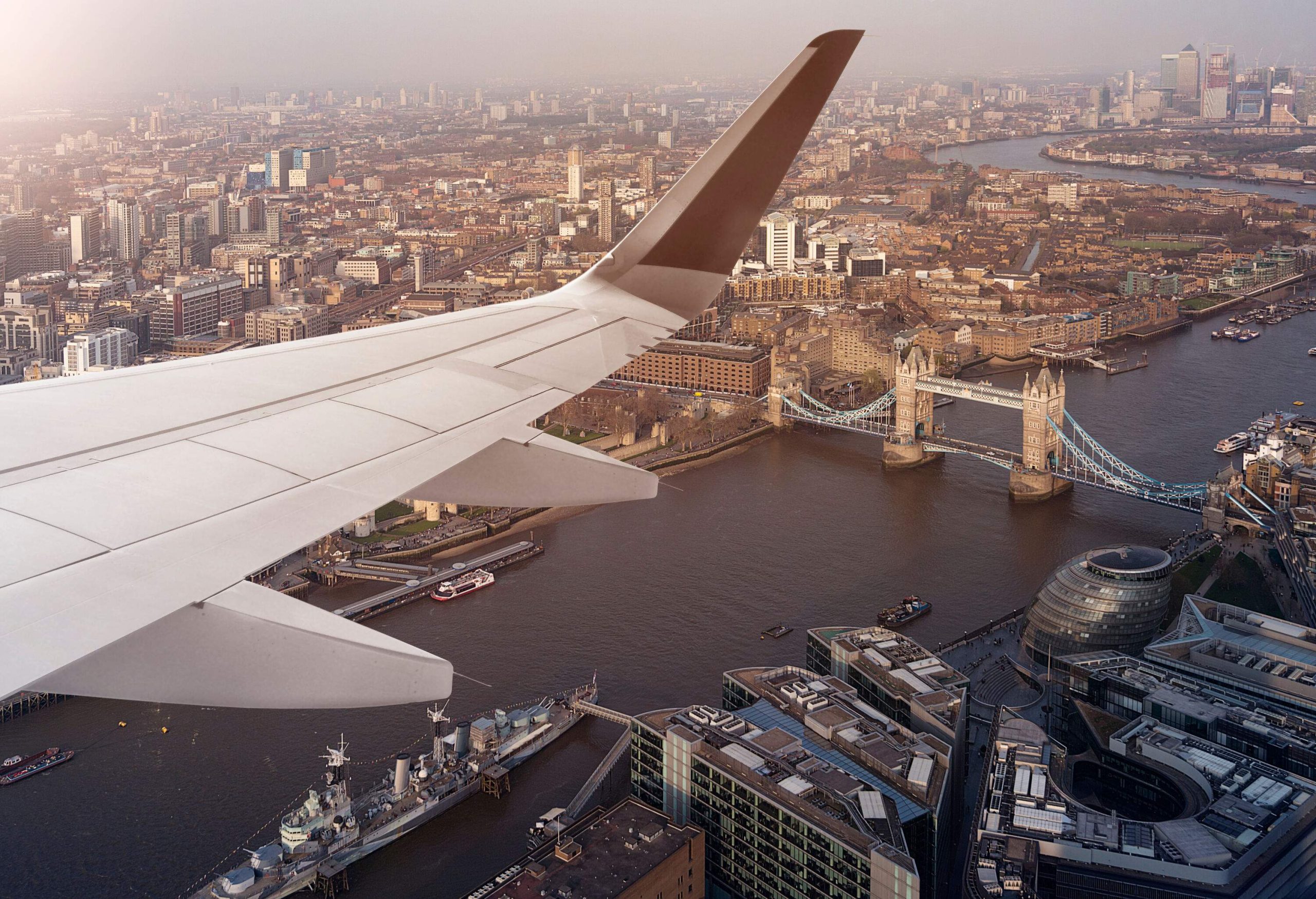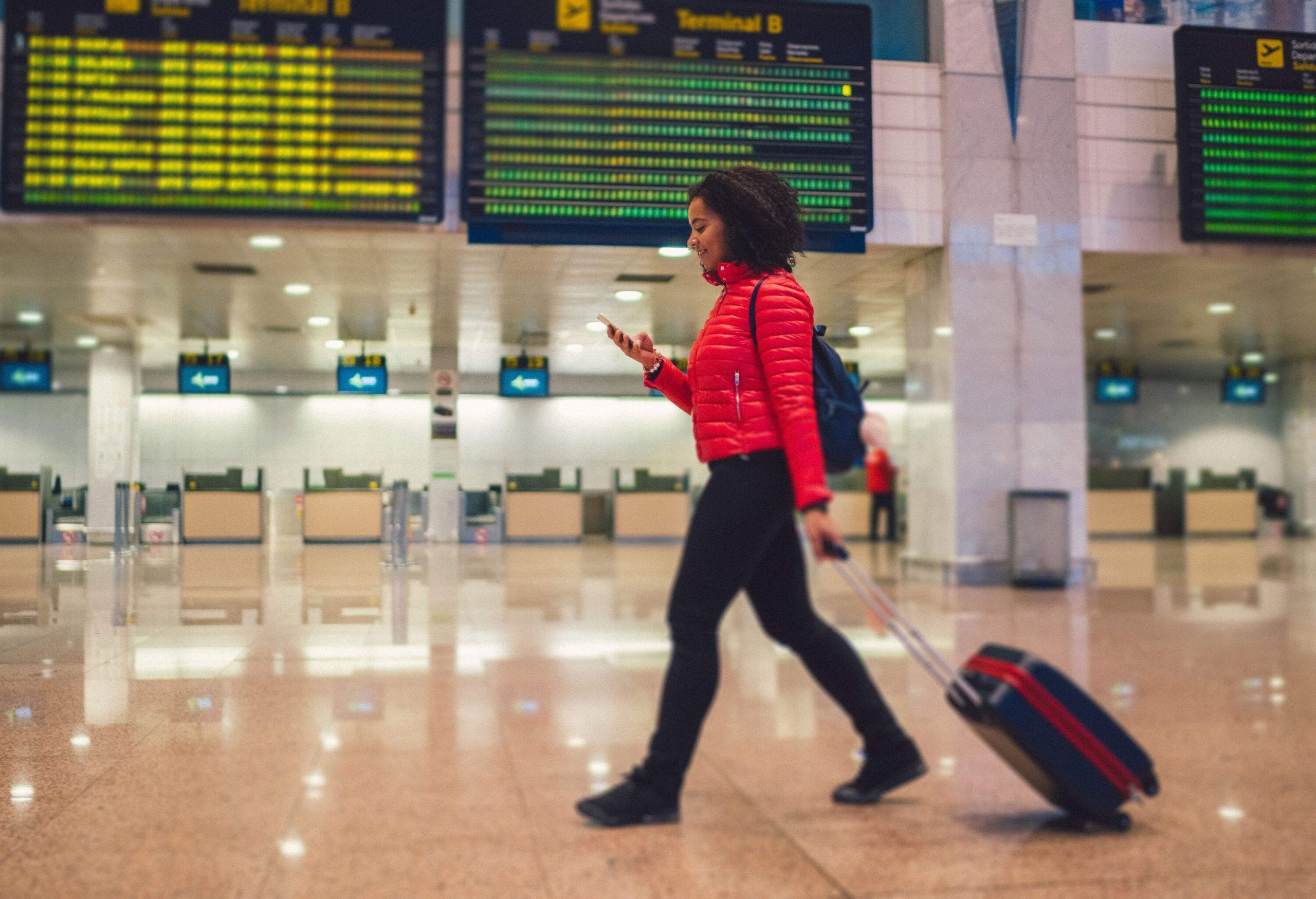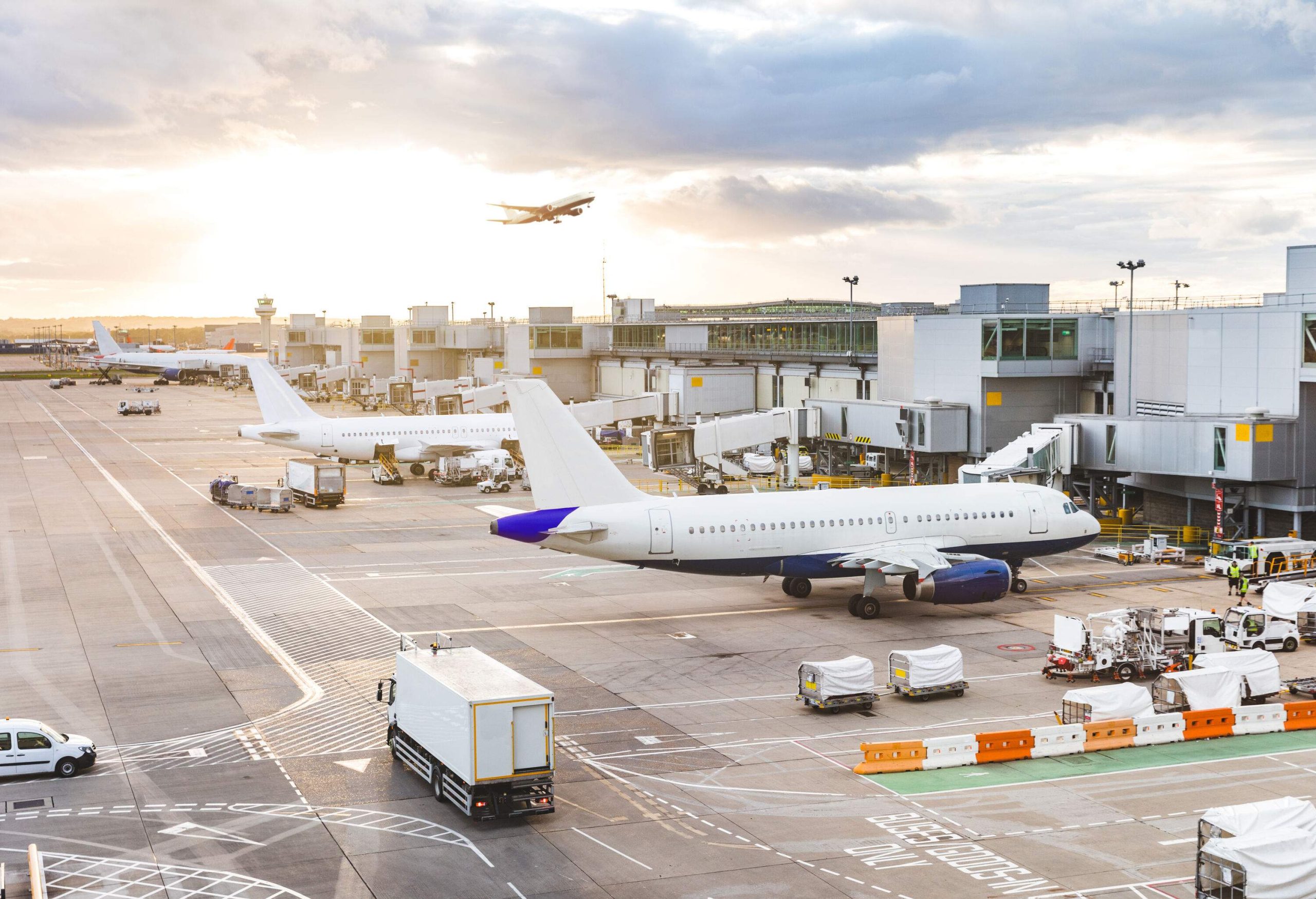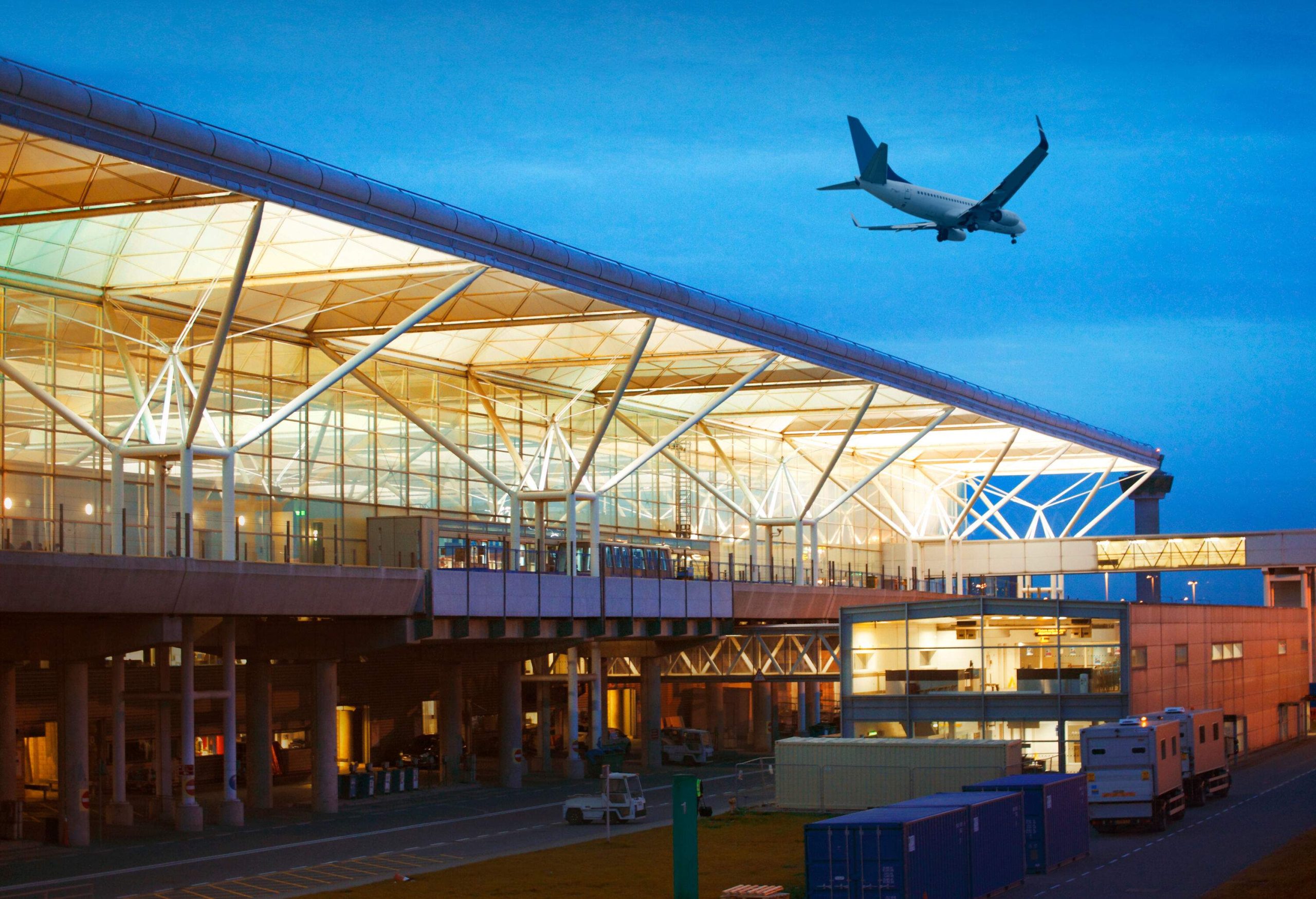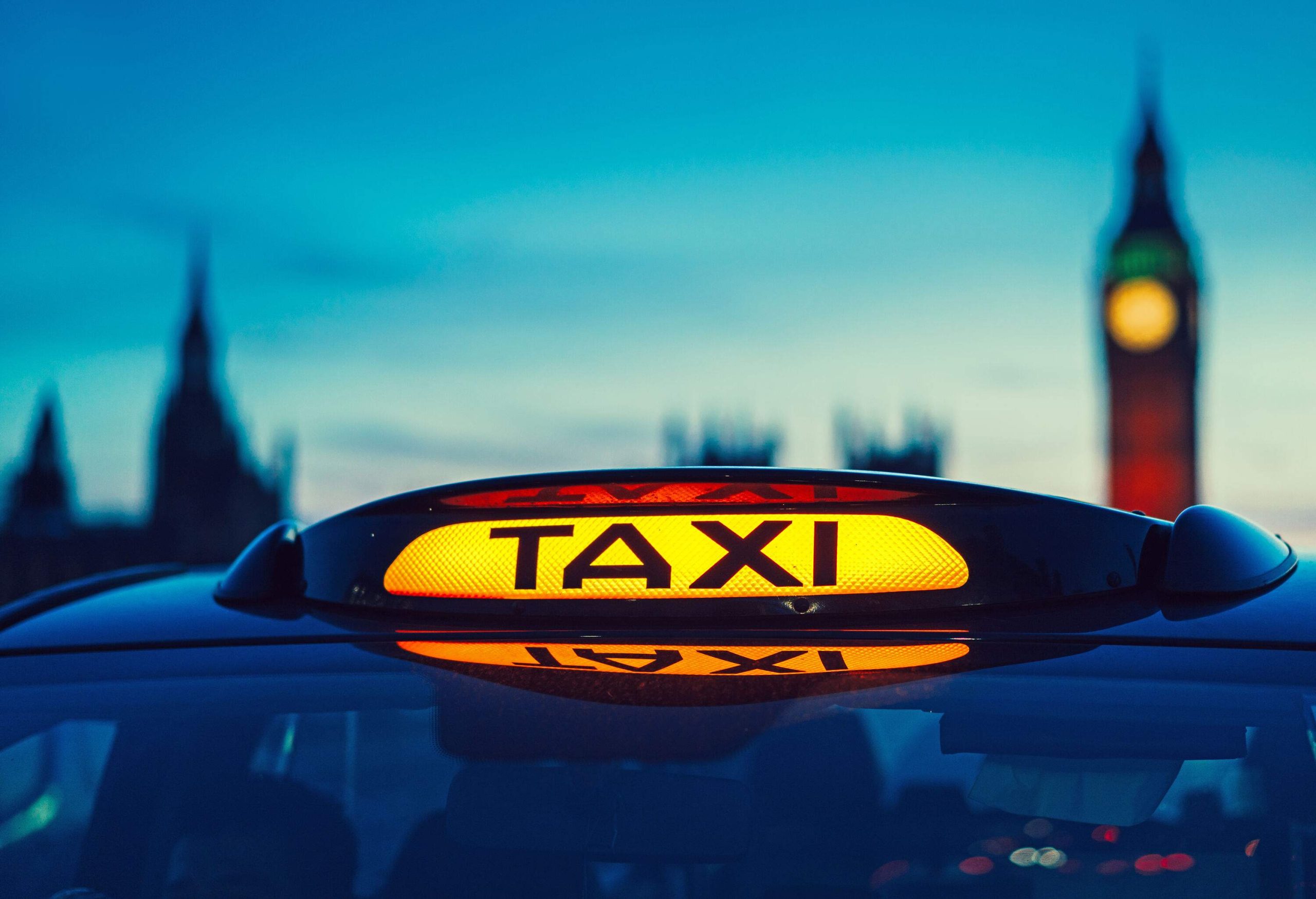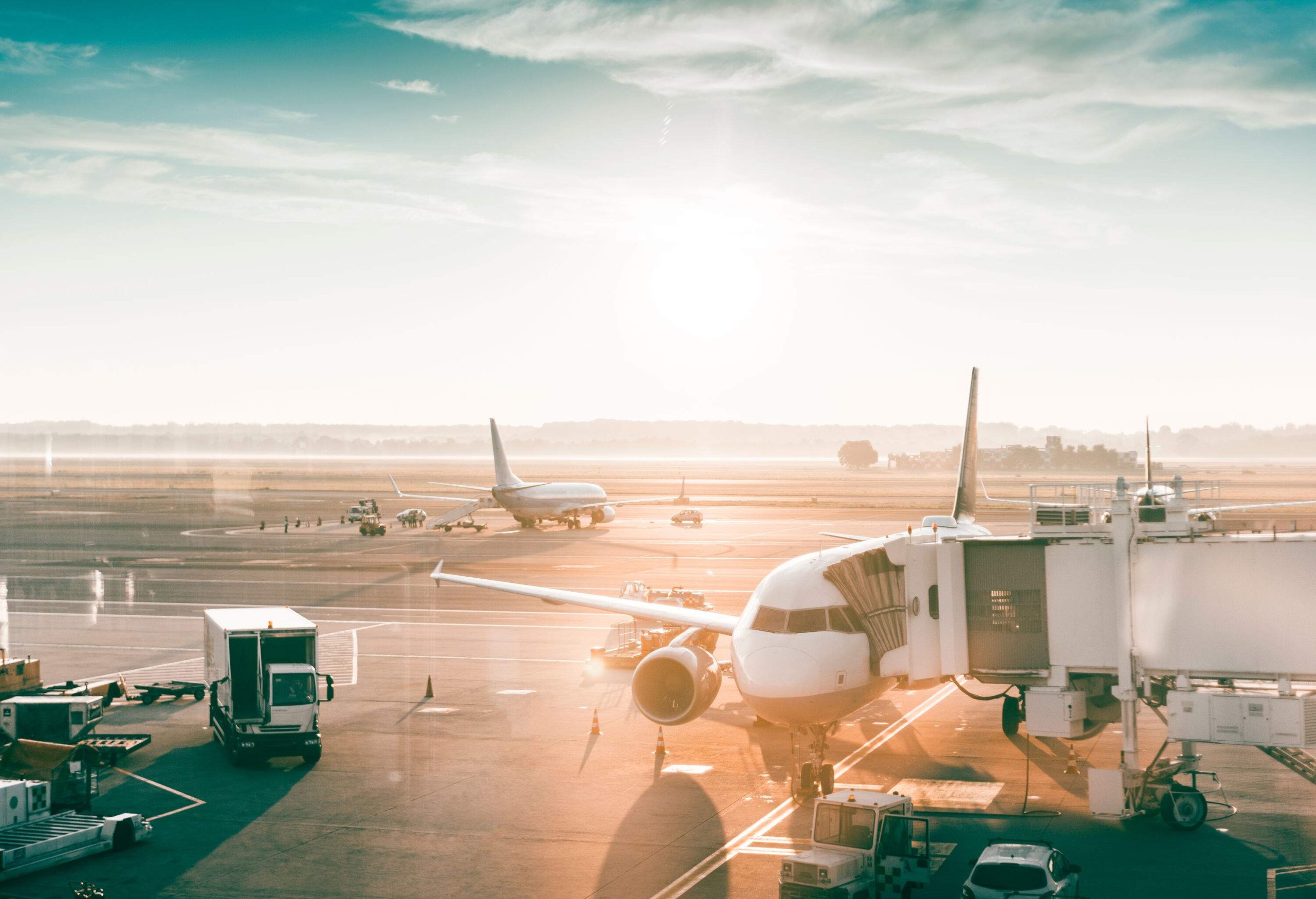The UK capital is the world’s busiest airline market serving thousands of flights daily. A metropolis of nearly ten million people covering 607 square miles (that’s nearly double the size of New York), there are six international airports in London. Where you should fly to and from will be decided by a number of factors. Your origin or destination, preferred airline, or connecting flight will all influence which London airport you should choose.
It will also depend on where you’re coming from, staying or traveling onwards to. London’s size and busyness makes it time consuming and expensive to travel through – especially with luggage. Whether you stay in the city or are heading off to explore the rest of the UK, picking the right airport could save you time, effort and money.
Find flights to London
London Heathrow – LHR
Heathrow Airport is London’s, the UK’s and Europe’s busiest airport. A major hub for connecting multi-city flights, 2023 saw just shy of 80 million passengers pass through its terminals. Serving 81 airlines covering 218 destinations across 86 countries both domestic and international, it’s not hard to see how. In short, it’s enormous.
Despite the numbering, Heathrow only has four terminals – Terminal 1 was closed in 2015. Something I learned the hard way is to give yourself plenty of time to get to your chosen terminal. Terminals 4 and 5 are around ten minutes further from London than Terminals 2 and 3. And while transfers between terminals are free, factor in walking times and you’ll need at least 30 minutes to be safe.
LHR airlines
Of the 81 airlines serving Heathrow, British Airways (BA) dominates. It operates more than half of all flights covering 134 short and long haul destinations from Terminals 3 and 5. Virgin Atlantic also uses it as a main base and is the second major operator. Germany’s flag carrier, Lufthansa, Ireland’s Aer Lingus and United Airlines round out the top five.
Although the EU is its largest market, the busiest route is New York JFK with more than three million flights in 2023 alone. Heathrow is the best airport to fly into London from the US, especially the east coast.
LHR location

Heathrow’s size and scale means it’s located outside central London, 14 miles west of Buckingham Palace as the crow flies. Don’t let that short distance fool you though, because getting into central London will likely take you at least an hour. If you’re traveling elsewhere in the UK, you may still need to travel into the city to catch your connection.
Taking a taxi will be eye-wateringly expensive and leave you at the mercy of London’s infamously slow-moving traffic. Much better to take public transport. The best options are all by train:
- Heathrow Express – The fastest option, it takes 15 minutes from Terminals 2 and 3 to Paddington Station and its many connection options. It’s also the most expensive, costing £25 (around $32) for a one way ticket at the station. That’s more than $2 a minute! If I know my travel dates well in advance, I always buy a Heathrow Express ticket online as soon as I can. Buy early enough and it can cost as little as £5.50 (around $7) – otherwise I take the Elizabeth Line.
- Elizabeth Line – Often called the ‘Lizzy Line’, Heathrow’s newest transport link is, in my opinion, the best compromise. Priced at £12.80 (around $16) for a one-way trip into central London, it takes around 35 minutes with convenient stops en route.
- London Underground Piccadilly Line – The cheapest option, it costs £5.50 (around $7) to get into central London. It’s also the slowest route, taking around an hour. It stops at lots of stations along the way, which can be frustrating or convenient depending on where you’re staying.
London Gatwick – LGW

Gatwick Airport is the second biggest and most convenient of the major London airports. Carrying nearly 19 million people in the first half of 2023 alone, its 47 operating airlines cover 193 destinations across 60 countries.
It has two terminals, North and South connected by a free elevated tramway, and serves a single runway. In fact, it’s classed as the busiest single runway airport in Europe despite actually having two runways (which are so close together they can’t be used at the same time). It’s also a major connection hub for long haul flights and layovers.
LGW airlines
Its secondary hub after Heathrow, BA operates more than 60 routes out of Gatwick. But the airport’s primary market is the low-cost airlines that account for nearly two thirds of its annual seat capacity. EasyJet is its main operator serving 120 routes, while Wizz Air, Vueling, Norse Atlantic and TUI also serve lots of destinations, mostly short haul.
The busiest route is to Dublin, followed closely by Barcelona. In fact, of the top ten busiest routes, Dubai is the only destination outside Europe. Gatwick also serves around ten US destinations making it London’s second best airport to fly into London from the US.
LGW location

Gatwick sits 23 miles almost directly south of Buckingham Palace. While that’s further away than Heathrow, it’s actually easier and cheaper to get into central London, although travel times are about the same.
Crucially, Gatwick Airport station has the best train connections of any London airport. At the South Terminal just five minutes from departures and arrivals, it has direct rail links to 120 stations nationwide and more than 700 with a single change. If you’re heading south or east, Gatwick is the best airport to fly into London.
Coach and bus services are also convenient, especially as they run 24/7, 365 days a year. They’re typically more reliable than trains and are also cheaper but can be slow. As with Heathrow, taxis into London are an exercise in wasting time and money. Train is best:
- Gatwick Express – The fastest route into London takes around 30 minutes non-stop. Costing £18.50 (around $23), the Gatwick Express drops you at London Victoria train station, one of London’s major transport hubs a stone’s throw from Buckingham Palace.
- Thameslink and Southern trains – There are several regional train options that can take you to London transport hubs like Clapham Junction and London Victoria. They mostly take around 30 to 45 minutes to get into central London and vary in price, but are cheaper than the Gatwick Express.
Stansted Airport – STN
The third biggest London airport isn’t really in London, and as such it’s an undeniable pain to get to. That hasn’t stopped Stansted Airport becoming a base for many low-cost operators offering often extraordinarily cheap flights. In 2023, 17 airlines connected nearly 28 million passengers to 192 destinations across 37 countries. Almost all are short haul and the vast majority focused in Europe.
One of Stansted’s strong points is its size. With one terminal, it’s easy and quick to navigate yet is fully serviced with shops and restaurants (Terracotta Italian Kitchen does a delicious but seriously spicy Amatriciana). But it does get very, very busy.
STN airlines
Of its operating airlines (which can vary greatly year by year), RyanAir is king. It flies to an extraordinary array of around 150 major and lesser-known domestic and international destinations. Other major airlines out of Stansted include Jet2, TUI, BA, Eurowings, EasyJet and Emirates.
While there are no flights to or from the US, American visitors may want to look at Stansted for very cheap deals to Europe, North Africa and the Middle East.
STN location

As I mentioned, Stansted is no fun to get to. Thirty-two miles northeast of Buckingham Palace, it sits way beyond London city limits. It’s this distance out of London and the comparative low costs of running Stansted that make it a budget operator favorite. For many, those cheap flights make it worth the added hassle of the commute – just give yourself enough time to get to the airport.
Stansted Airport train station is conveniently located directly below the terminal, and has good links to stations across the UK – especially if you’re heading north. To get into London, public transport is once again your best bet:
- Stansted Express – The fastest route is the express train to Liverpool Street station in east London, with a stop off in Tottenham Hale in north London en route. Departing every 15 minutes at a price of £21.90 (around $28), it takes about 50 minutes. Be warned, the train is often standing room only and is, in my experience, unreliable and often late.
- National Express coach – Usually I’m no fan of coach travel from transport hubs, but at Stansted it’s the best option. Coaches depart regularly and take just over an hour into central London (more during peak traffic), with tickets costing around £10 ($13). Coaches are clean, comfy, have WiFi and are a two-minute walk from the terminal. If you need a snack, I find the cafes at the bus terminal usually have smaller queues than in the terminal.
Luton Airport – LTN
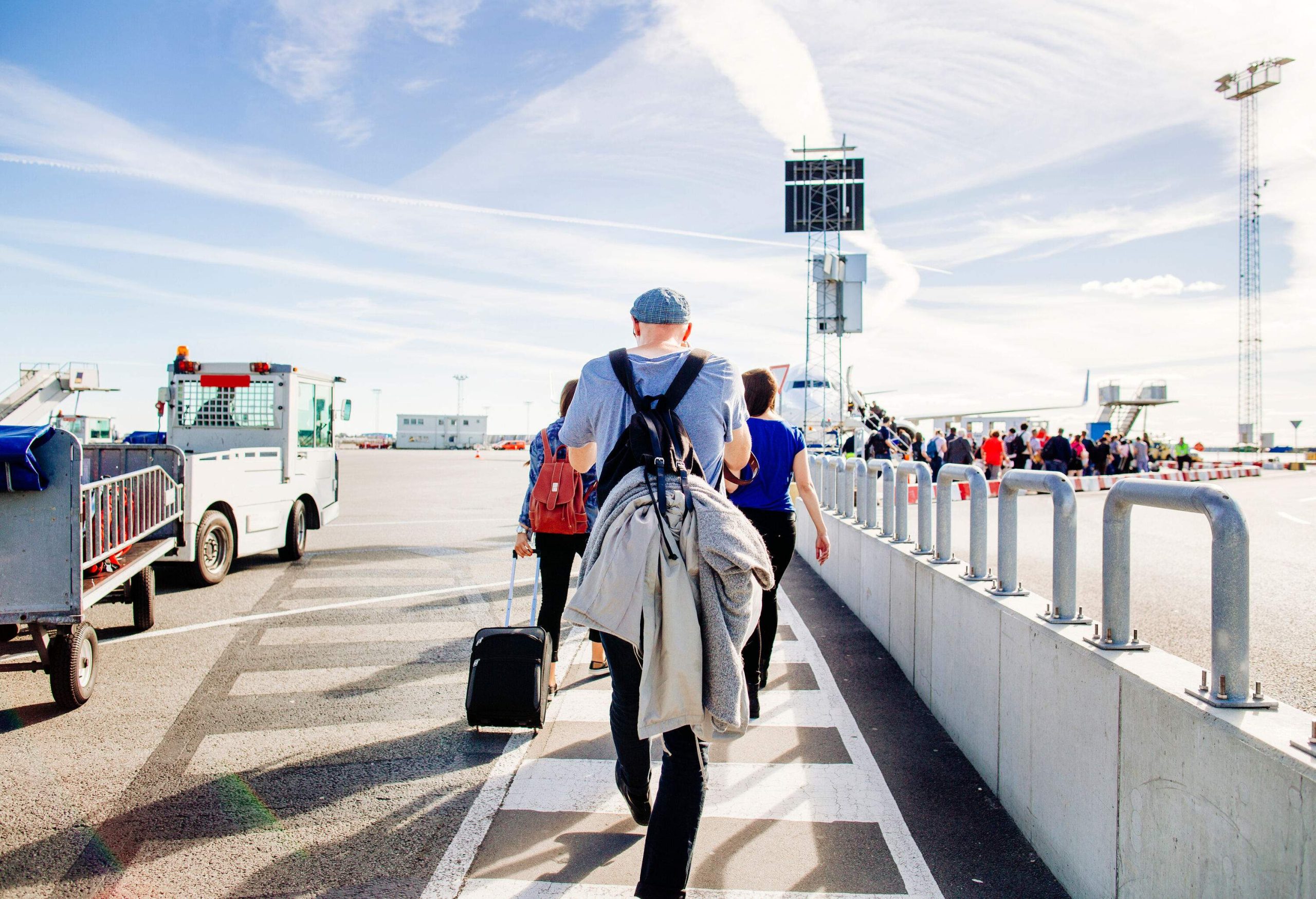
Much like Stansted, London’s fourth biggest airport is a hub for low-cost carriers plying routes in Europe, the Middle East and North Africa. In 2023 Luton Airport saw just over 16 million passengers travel to and from 122 destinations in 37 countries. And much like Stansted, it is something of a pain to get to.
Luton Airport has recently emerged from a massive and much needed overhaul. A new executive lounge, lots of shops and restaurants (who doesn’t love a pre-flight Benito burrito?) and a smarter layout have made it much easier to navigate. This combined with its cheap flights have made it the fastest growing of London’s airports in recent years.
LTN airlines
Almost exclusively home to budget airlines, EasyJet is the largest Luton Airport carrier covering nearly 70 destinations. Ryanair and Wizz Air are the other multi-destination airlines with Fly One, Dan Air and El Al each flying to just one.
There are no Luton flights to or from the US, but it’s worth considering for cheap flights to lesser-visited destinations throughout Europe.
LTN location

A distant 28 miles from Buckingham Palace and central London, Luton is a London airport in name only. I’d call it more like a convenient neighbor. Its location has made it a popular place for people to drive and park at. Unfortunately, a massive multi-story carpark fire in late 2023 put pay to that and parking spaces are limited for the foreseeable future.
With the distance from London making taxis very expensive, it again falls to public transport for the easiest commute:
- National Express coach – The cheapest and most direct route into London is on a National Express coach and takes just under an hour. With two routes to Paddington and Victoria Stations, it stops at lots of convenient central London locations along the way. Tickets are £5.50 (around $7) if you buy online in advance but cost more at the airport.
- Luton Express – The Luton Express has long been the second best option because it required a shuttle bus to Luton Parkway Station. This was always a massive hassle with long queues and, inevitably, long waits. Recently, the Luton DART has opened. A seamless rail transfer between the two, it promises to reduce that transfer time to just a few minutes. It’s then a 32-minute straight shot to London St Pancras Station for rail connections including LeShuttle, the train to Europe. Tickets cost £10 (around $13) each way, including the DART transfer.
City Airport – LCY
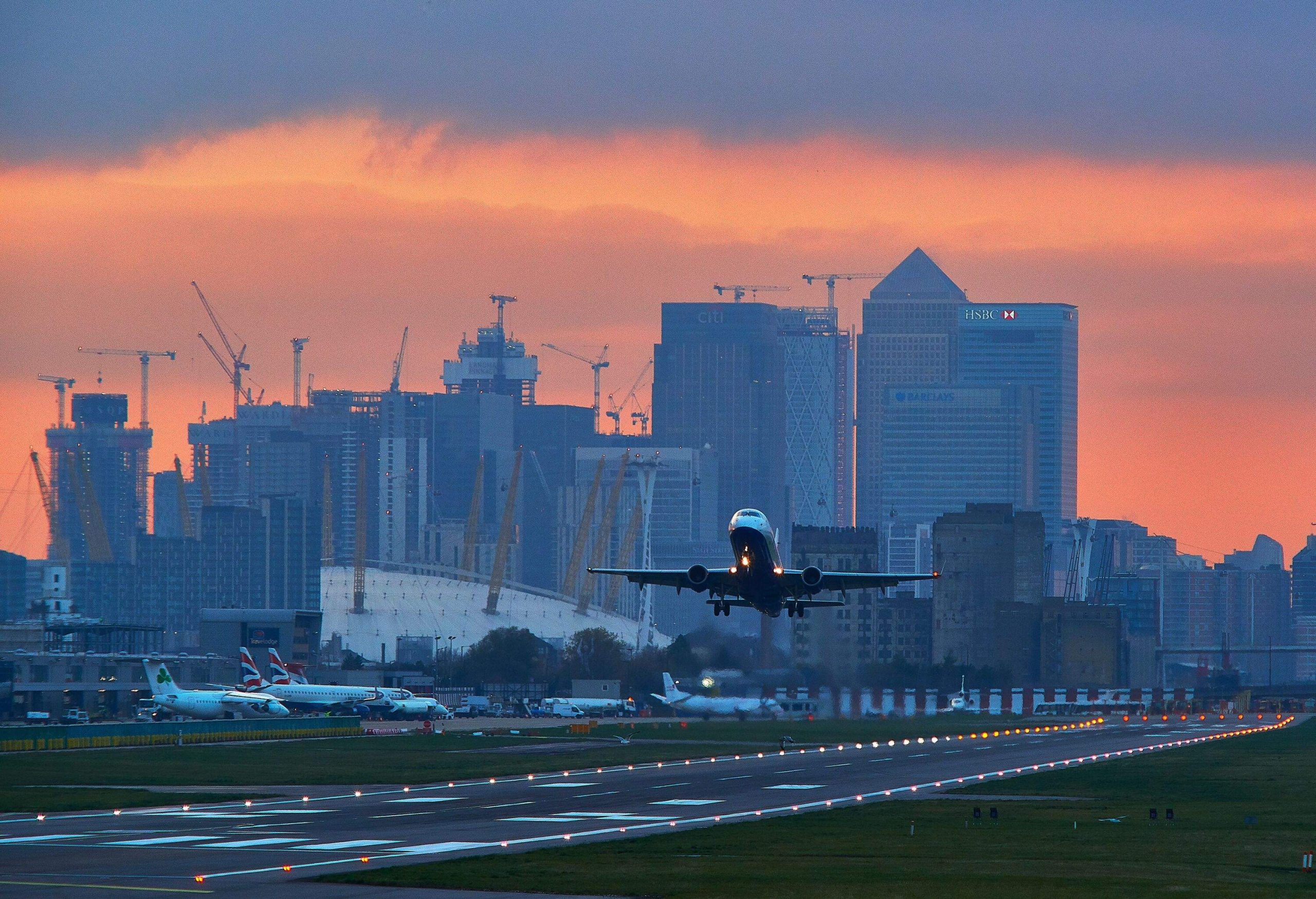
City Airport is the closest airport to London city center and popular with business travelers. Tiny in comparison to other London airports, it’s by far the most convenient to fly into but is limited to European and domestic routes. Just under 3.5 million passengers passed through its lone terminal in 2023 across 36 destinations in 18 countries.
Of all London’s airports, City is the easiest to use – its diminutive size makes it a breeze to navigate. The installation of new security scanners in 2023 have made security much less of a hassle. Thanks to this new technology you can leave liquids, laptops and tablets in your carry-on, massively speeding up security checks.
LCY airlines
City Airport serves eight airlines. BA is by far the biggest carrier, flying to 30 destinations. Swiss Air and Luxair each fly to two, and ITA Airways, KLM, Lufthansa, LOT Polish Airlines and Loganair fly to just one destination each.
LCY location
Located at the Royal Docks in London’s financial heart, City Airport is the easiest London airport to commute to. It even has its own underground station on the Docklands Light Railway (DLR) line. Thanks to its central location taxis aren’t too expensive, but are still slower and pricier than the underground.
DLR underground – It’s just eight miles and a 30-minute ride to Buckingham Palace and the city center. DLR trains come and go every four to ten minutes and tickets cost £3.70 (around $5) one way.
Southend Airport – SEN
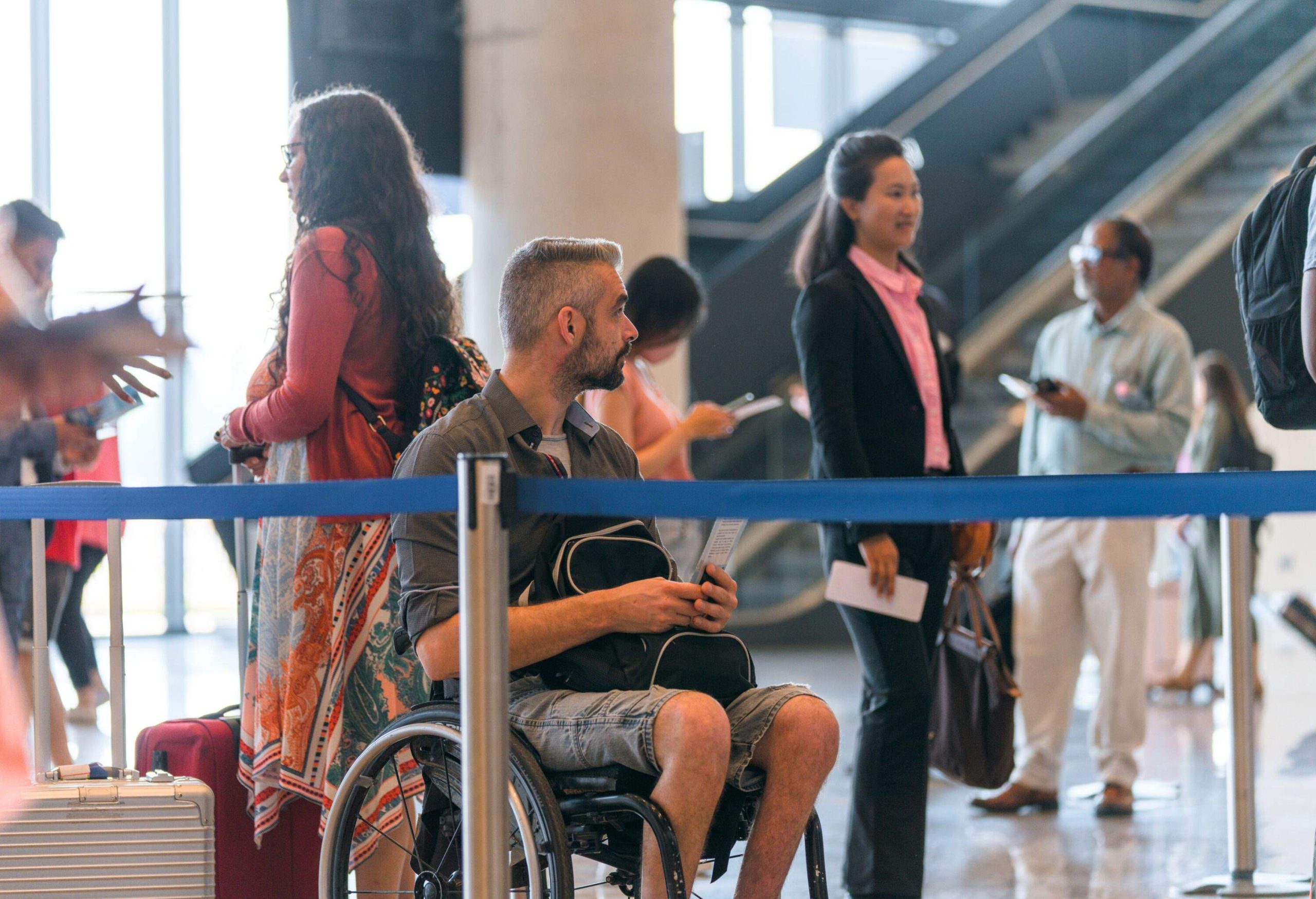
Southend Airport is something of an outlier, far to the east of London city in the town of Southend-on-Sea. It’s considered a London airport because it’s convenient for coming from and heading to east London, counties and the coast. The smallest of the London airports in terms of passenger numbers, it serves around three million passengers annually at its busiest.
Operating solely within Europe, it covers 11 destinations across eight countries but has plans for serious expansion. With only a few departing flights a day, the single terminal seldom gets busy. But it has enough facilities to keep you in coffee and duty free until you fly.
SEN airlines
Just three low-cost airlines operate out of Southend Airport. EasyJet is the main carrier, covering eight destinations, with BHAir and Aeroitalia covering one each. The airport splits its flights into summer and winter routes, with special seasonal destinations like Finland available on limited dates.
SEN location

At 37 miles to Buckingham Palace, Southend Airport is the furthest London airport from the city center. It also has the longest transfer time. Taking an hour and a half by car, a taxi from the city center will cost you over £100 (around $127) and takes twice as long as the train.
Greater Anglia train – Up to six trains an hour connect Southend Airport station with London city center. It takes 52 minutes to London Liverpool Street with tickets costing £20.10 (around $25) one way.
What’s the best London airport to fly into?

Flying into and out of London is often a case of Gatwick vs Heathrow. That’s especially true for long haul destinations like the US. But if you’re flying within Europe or closer destinations in the Middle East and Africa, London’s smaller airports are often a better option. Cheaper flights and a greater variety of destinations can make the longer commute to reach them worth the effort.
With airports dotted north, east, south and west around London’s periphery, you can also pick based on where you’re staying. The all round most convenient and well-served airport is Gatwick, thanks in particular to its excellent rail connections. Heathrow is convenient for London, but if you’re traveling elsewhere in the UK you’ll almost certainly need to commute into London to find connecting transport.
If you’re flying for business, London City Airport is your go-to for its location and convenience, but is very restricted in the routes it serves. For short hops to Europe, Stansted, Luton and Southend all offer cheap flights to some amazing places.
Conclusion
No one airport in London is better than the other. The reason there are six is because they serve a diverse range of needs and a mind-boggling number of destinations. Truly, they connect the English capital to all four corners of the world. You can find out more about the airports in some of those places in other KAYAK airport guides.
How was this guide created
I lived in and worked from London for more than 10 years and still regularly commute back. I’ve flown more times than I can count from all six of its airports and have learned over time how to navigate their quirks. Which security lanes are usually fastest, which restaurants are worth visiting, how long does it really take to reach the furthest gate?
This guide shares those experiences to help you make an informed decision about which airport to use alongside practical factors like your origin and destination.
Disclaimer: Prices and information are correct as of 02.01.2024 and may vary with time.

